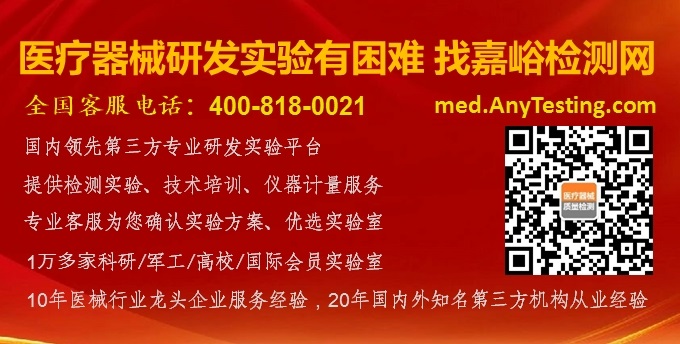您当前的位置:检测资讯 > 科研开发
嘉峪检测网 2022-02-17 20:48
前言导读
结构性心脏病是近年心血管疾病领域提出的一个新概念,2005年由德国法兰克福的Horst Sievert医生首先提出,泛指一大类先天性或获得性的以心脏和大血管结构异常为主要表现的心血管疾病,如传统定义的先天性心脏病、心脏瓣膜疾病和心肌病等。
广义的结构性心脏病是指除原发心电疾患(因某些电生理异常而发生的VT/VF)和循环疾病(部分高血压、稳定性心绞痛、ACS)以外,任何心脏结构的异常,任何与心脏和大血管结构有关的疾病。而狭义的结构性心脏病是指解剖异常引起的心脏结构改变所造成的心脏的病理生理变化。包括:(1)先天性心脏病:室间隔缺损(VSD)、房间隔缺损(ASD)、动脉导管未闭(PDA)等;(2)瓣膜病:二尖瓣、三尖瓣、主动脉瓣、肺动脉瓣等;(3)心肌病:肥厚性心肌病、扩张型心肌病、致心律失常型右室心肌病等;(4)心肌梗塞后室间隔穿孔、室壁瘤、疤痕心肌等。
在过去十年中,结构性心脏病的诊断及治疗取得了飞速发展,成为了当今心血管疾病领域的一大亮点,其未来发展引人瞩目。
根据弗若斯特沙利文的资料显示,被广泛视为针对瓣膜性心脏病高度有效疗法的介入式瓣膜手术在中国仍然供不应求,用于该等手术的经导管心脏瓣膜器械亦然。此问题影响了大量未能得到妥善治疗的病患,也为合格并致力于改变现状的医疗器械从业者带来了可观的商业机遇。
主动脉瓣介入器械市场概览
瓣膜性心脏病的特点为四个心脏瓣膜(即主动脉瓣、二尖瓣、三尖瓣及肺动脉瓣)中一个或多个瓣膜出现损伤或缺陷。在这几个瓣膜中,主动脉瓣控制心脏和主动脉之间的血液流动,从而控制通往身体其他部位的血管;二尖瓣和三尖瓣控制心房和心室之间的血液流动;而肺动脉瓣控制从心脏到肺的血液流动。正常运作的瓣膜可确保适当的血液流动,但瓣膜性心脏病会导致瓣膜变得太窄及硬化(狭窄)而无法完全开启,或无法完全闭合(反流)。下图显示了不同类型的瓣膜性心脏病。

图片来源:文献回顾、弗若斯特沙利文报告
在治疗方案选择方面,对于轻度和中度患者,一般疾病早期通过药物治疗延缓疾病的进展。对于重度患者则需要通过手术干预,因为瓣膜性心脏病是一个机械性病症,相当于心脏这个“泵”的“阀门”坏了,仅通过药物治疗效果有限。
其中,主动脉瓣疾病是相对严重的瓣膜病之一,如果患者出现症状后不及时干预,中期生存期较短。经导管主动脉瓣膜置换术(Transcatheter aortic valve replacement ,TAVR)是针对主动脉瓣疾病(尤其是主动脉瓣狭窄)的主要治疗方法。TAVR手术作为一种介入治疗技术,不需要开胸,主要是经过股动脉穿刺,然后通过导管将特制的人工瓣膜送到原有心脏瓣膜的位置,通过球囊扩张释放后,即刻发挥作用。使用TAVR介入手术植入瓣膜的最大优势是患者身体接受度高,不需要开胸,从而降低了对病人的整体伤害。其次,介入手术可以在不影响心脏跳动的情况下操作,将人工瓣膜从病人的股动脉血管植入到病变的位置。

TAVR示意图
对于手术数量和渗透率,根据著名分析机构的相关分析,我国TAVR手术的数量从2017年的200台增加至2020年的3,600台,复合年增长率为173.9%,且预计将从2020年的3,600台增加至2025年的42,000台及2030年的109,400台,2020年至2025年的复合年增长率为63.3%且2025年至2030年的复合年增长率为21.1%。我国TAVR手术的渗透率由2017年的0.0%增长至2020年的0.5%,并预计将进一步增长至2025年的4.5%及2030年的10.2%。下表显示我国TAVR手术的数量及渗透率。

资料来源:文献回顾、弗若斯特沙利文报告
对于产品市场,根据著名分析机构的相关分析,我国TAVR市场于2020年达到人民币555.8百万元,2017年至2020年的复合年增长率为138.0%,TAVR市场预计将于2025年增至人民币5,055.7百万元,于2030年增至人民币11,490.5百万元,2020年至2025年的复合年增长率为55.5%,而2025年至2030年的复合年增长率为17.8%。下表显示我国的过往及预测TAVR产品市场:

资料来源:文献回顾、弗若斯特沙利文报告
TAVR 具备巨大的临床价值创造、商业价值实现以及高技术壁垒和长期不可替代性,同时,仍在不断优化迭代技术水平,不断优化其对于主动脉瓣狭窄和反流的治疗效果。可以说,TAVR 是名副其实的长坡厚雪赛道。
不过,虽然目前国内TAVR以及介入瓣膜行业处于发展早期,但是不可否认的是,TAVR市场已经出现了激烈竞争的局面,也出现了各家厂商产品的同质化的现象,下图为截至至2021年底国内 TAVR 产品管线示意:

图片来源:蛋壳研究院
在众多的TAVR产品中,作为心脏瓣膜领域的鼻祖和绝对巨头-爱德华的SAPIEN 3备受瞩目,国外医疗巨头产品在中国的上市,也将国内TAVR带入“战国时代",因此,本文对爱德华的Sapien 3进行聚焦,以飨读者。
爱德华-Sapien 3概览
从全球TAVR市场范围来看上,比较公认的市场格局为:爱德华占比约60%,美敦力占比约30%,雅培、波士顿科学等占剩余10%份额。目前,爱德华陆续已上市的TAVR产品共有两种——SAPIEN 3、以及SAPIEN 3 Ultra,为标杆级别的器械。2020年6月,爱德华SAPIEN 3在中国获得NMPA批准,成为首款获得中国监管机构批准的国外瓣膜产品。

SAPIEN 3示意图
专利分析
需要特别说明的是,对于心脏瓣膜医疗器械,笔者对国内外各大厂家均进行了详细研读和分析,形成了卓有成效的工作成果,基于篇幅原因,本篇文章笔者着重以爱德华的主动脉瓣—SAPIEN 3为例,对心脏瓣膜医疗器械相关专利情况进行简要说明,如若获取完整心脏瓣膜医疗器械专利清单与专利分析可以与笔者取得联系,共同交流学习。
技术脉络
对于SAPIEN 3技术脉络,笔者通过如下图片向各位读者进行展示:

SAPIEN 3技术脉络示意图
技术理解
对于SAPIEN 3技术要点,其主要包括四个主要方面部分,笔者通过如下图片向各位读者进行展示:

SAPIEN 3技术要点示意图
另外,对于SAPIEN 3技术拆解,其装配关系如下四幅图所示:



SAPIEN 3技术装配示意图
重点专利
根据SAPIEN 3相关重点专利,爱德华对其进行了细致性的专利布局,笔者从涉及的相关专利中分别择机选择了3组专利进行了解析,相关结果如下:需要特别说明的是,如若获取完整专利清单与专利分析情况可以与笔者取得联系,共同交流学习:
1
|
公开/公告号 |
US5411552B |
申请日 |
1994-06-14 |
|
发明名称 |
Valve prothesis for implantation in the body and a catheter for implanting such valve prothesis |
||
|
解决的技术问题 |
The valve prosthesis according to the invention does not require an actual operation but merely a small intervention to optionally expose the body channel, e.g., a vein, through which the insertion takes place. Thus, patients for whom an operation would be associated with high risk can be offered implantation of, for instance, cardiac valves. After the implantation has taken place, the after-treatment will advantageously be shorter than normally, which means fewer hospital days for the patient. Moreover, it is assumed that it will be possible to implantate the valve prosthesis under local anaesthetic. |
||
|
技术方案 |
A valve prosthesis (9) for implantation in the body by use of catheter (11) comprises a stent made from an expandable cylinder-shaped thread structure (2,3) comprising several spaced apices (4). The elastically collapsible valve (4) is mounted on the stent as the commissural points (5) of the valve (6) are secured to the projecting apices (4). The valve prosthesis (9) can be compressed around the balloon means (13) of the balloon catheter (11) and be inserted in a channel, for instance in the aorta (10). When the valve prosthesis is placed correctly the balloon means (13) is inflated thereby expanding the stent and wedging it against the wall of aorta. The balloon means is provided with beads (14) to ensure a steady fastening of the valve prosthesis on the balloon means during insertion and expansion. The valve prosthesis (9) and the balloon catheter (11) make it possible to insert a cardiac valve prosthesis without a surgical operation comprising opening the thoracic cavity. |
||
|
相关附图 |
|
||
2
|
公开/公告号 |
US8591575B2 |
申请日 |
2007-03-28 |
|
发明名称 |
Method of dilating a stenotic aortic valve and implanting a prosthetic valve |
||
|
解决的技术问题 |
However, this technique has been abandoned by most physicians because of the very high restenosis rate which occurs in about 80% of the patients within 10 to 12 months. Indeed, immediately after deflation of the balloon, a strong recoil phenomenon often produces a loss of half or even two thirds of the opening area obtained by the inflated balloon. For instance, inflation of a 20 mm diameter balloon in a stenosed aortic orifice of 0.5 cm2 area gives, when forcefully and fully inflated, an opening area equal to the cross sectional area of the maximally inflated balloon, i.e., about 3 cm2. However, measurements performed a few minutes after deflation and removal of the balloon have only an area around 1 cm2 to 1.2 cm2. This is due to the considerable recoil of the fibrous tissue of the diseased valve. The drawback in this procedure has also been clearly shown on fresh post mortem specimens. |
||
|
技术方案 |
A method for treating a stenotic native aortic valve in a human heart is provided. The method comprises dilating the stenotic native aortic valve using a dilatation catheter and then deploying a prosthetic heart valve within the dilated stenotic native aortic valve. The prosthetic heart valve comprises a collapsible and expandable metallic stent and a valvular structure formed of a synthetic biocompatible material. The valvular structure is positioned substantially between the inlet and outlet ends of the stent for preventing the flow of blood in one direction. The prosthetic heart valve may further comprise an internal sleeve for creating a seal along at least a portion of the stent wall. |
||
|
相关附图 |
|
||
3
|
公开/公告号 |
US8382826B2 |
申请日 |
2010-08-12 |
|
发明名称 |
Method of delivering a prosthetic heart valve |
||
|
解决的技术问题 |
Although a variety of bendable and steerable devices have been proposed over the years, each of the existing devices has shortcomings that limit its effectiveness. Accordingly, an urgent need exists for an improved steerable delivery system to facilitate advancement of an implant and/or therapy device through a patient's vasculature to a treatment site. It is desirable that such a system overcomes the shortcomings associated with existing devices. It is also desirable that such a system be versatile, reliable and easy to use. The present invention addresses this need. |
||
|
技术方案 |
A method of delivering a prosthetic heart valve to a native valve site within the human vasculature. The prosthetic valve is disposed on a balloon at the end of a balloon catheter. The balloon catheter passes through a delivery sleeve assembly. A pull wire travels from the handle to a distal end of the delivery sleeve assembly. Actuation of the handle pulls on the pull wire, which causes the delivery sleeve assembly to bend for facilitating navigation through a patient's vasculature. A stretchable cover is preferably placed over the slotted tube for biasing the steerable catheter toward a straight position. Once advanced to the vicinity of the native valve site, the prosthetic valve may be accurately positioned by advancing the balloon catheter relative to the delivery sleeve assembly and then deployed within the native valve site by inflating the balloon. In an alternative embodiment, the delivery sleeve assembly may be used to advance a self-expanding prosthetic heart valve through a patient's vasculature and a pusher member may be used to eject the prosthetic valve at the native valve site. |
||
|
相关附图 |
|
||
专利纠纷
需要特别说明的是,作为心脏瓣膜领域的巨头公司,爱德华在知识产权方面高度重视,引领了医疗器械领域最著名的专利纠纷案件:在TAVR领域,美敦力、爱德华生命科学、波士顿科学就产品和市场展开了激烈的专利三国战。爱德华生命科学向美敦力发起专利侵权诉讼,指控美敦力的CoreValve心脏瓣膜产品侵犯其Sapien心脏瓣膜产品的专利技术,经多年诉讼,双方最终和解,美敦力向爱德华生命科学支付超7.5亿美元。波士顿科学和爱德华生命科学之间的专利纠纷也缠斗数年,围绕爱德华生命科学的Sapien 3 及Sapien 3 Ultra心脏瓣膜升级产品,双方相互指控专利侵权,最终达成和解,爱德华生命科学向波士顿科学支付1.8亿美元。
不仅如此,爱德华还就心脏瓣膜相关专利对胜犹达(雅培)、戈尔、库克、CarboMedics、Neovasc等公司展开过专利战,由此可见爱德华对知识产权保护的决心和战斗力。笔者对上述案件均进行过细致的研究汲取,感兴趣的读者可以和笔者取得联系,一起沟通学习。
结 语
目前,对于TAVR设备而言,随着启明、沛嘉、微创、杰成(健适收购)等公司相关产品的上市,国内厂商目前占据了较高的市场份额,不过随着爱德华、美敦力、雅培等国外巨头公司在国内市场的发力,TAVR竞争将会更加白热化,必然的,国外巨头公司和国内新兴企业在知识产权方面布局会更加紧密,TAVR赛道上的各个国内厂商之间的竞争也会逐渐激烈,届时相关知识产权问题也必将会成为各大TAVR厂商的研究重点课题,后续相关产品的的研发和专利事务值得持续关注。

来源:Internet


